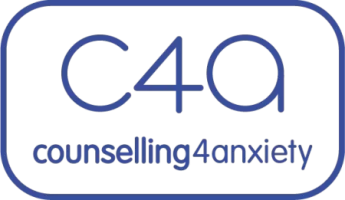There seems to be a pattern to intrusive thoughts and the corresponding anxiety that lead to the brain mis-interpreting the danger of the thought and placing more weight and credibility around it, when it comes into the mind of an OCD and anxiety sufferer.
Intrusive thoughts have a link to the values, moral codes and experiential fears of individuals. Intrusive thoughts don't just have a theme that is 'plucked' out of the air and they are based on cognitions that play on the values, moral codes and fears of people that I listed earlier. So, for example, someone who grows up hearing that his/her mother had incontinent problems after the birth of her children, may well have intrusive thoughts about losing control of their bladder. Or someone who works with children and who finds significant personal value in working with children and who passionately cares about their safety, may get intrusive thoughts that they could be a risk to children. The intrusive thought flips their moral code on its head in this instance, eliciting a sharp anxiety reaction in an individual.
So, when an intrusive thought enters into the mind of an individual who is prone to OCD and anxiety, the thought is so polar to their values and belief system that it leads to a rise in anxiety that the brain interprets as a threat. That is the way that the brain has evolved, so any detrimental changes in the body are picked up as a threat and if this is caused by a thought, then that thought becomes cognitively and automatically marked as 'dangerous'.
This pattern is followed in the same way as someone who has obsessive fears about their bladder or about 'wetting themselves'. The thought enters their mind and any previous incidents about their mother losing control of her bladder, subconsciously add weight to the thought and the brain marks the thought as dangerous and problematic.
There are however, additional safety behaviours and sensory perceptions in the body that further add to the layer of mis-interpretation by the brain around such thoughts. Keeping with the bladder experience, as the anxiety rises around the initial intrusive thought, the brain obviously interprets the thought as a threat and nerve impulses automatically sense the 'state of the bladder'. These nerve impulses that test or check the state of the bladder add further weight to the cognition and inner feelings that there is a problem and something bad is going to happen. This loop further re-enforces perceptions that the thought has real meaning to it and something catastrophic is going to happen.
It is also interesting to note that someone with OCD may then ruminate on the thought in an attempt to 'fix it' or come to a conclusion, and we all know that there is no conclusion since this very action re-strengthens the weight of it and the fears around it.
It is not just bodily sensations that are associated with the initial intrusive thought. Imagery that comes to mind with the corresponding intrusive thought all add to it, where the initial intrusive thought is based on the exact opposite of the values and moral framework of the individual.
It is therefore the alarming nature of the intrusive thought, and the corresponding bodily responses and 'internal scanning process' in the body that all add to the cycle and the strength of such thoughts.
The process lays out areas where CBT and other specialists can work with the client on. Breaking the consolidation of the intrusive thought and removing the initial anxiety 'whoosh' of the thought can make a real difference to this process, short-circuiting it so that the individual does not end up in a regular ruminative process.
Understanding this process is a liberating to many clients and allows them to understand the process which has historically sucked them into consistent ruminations and confusion.

